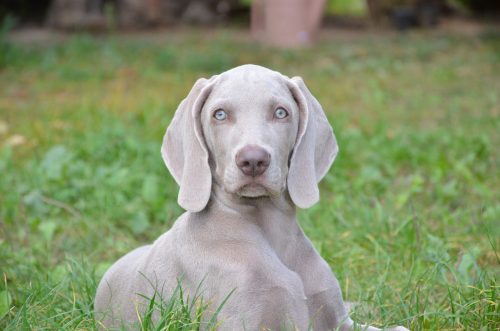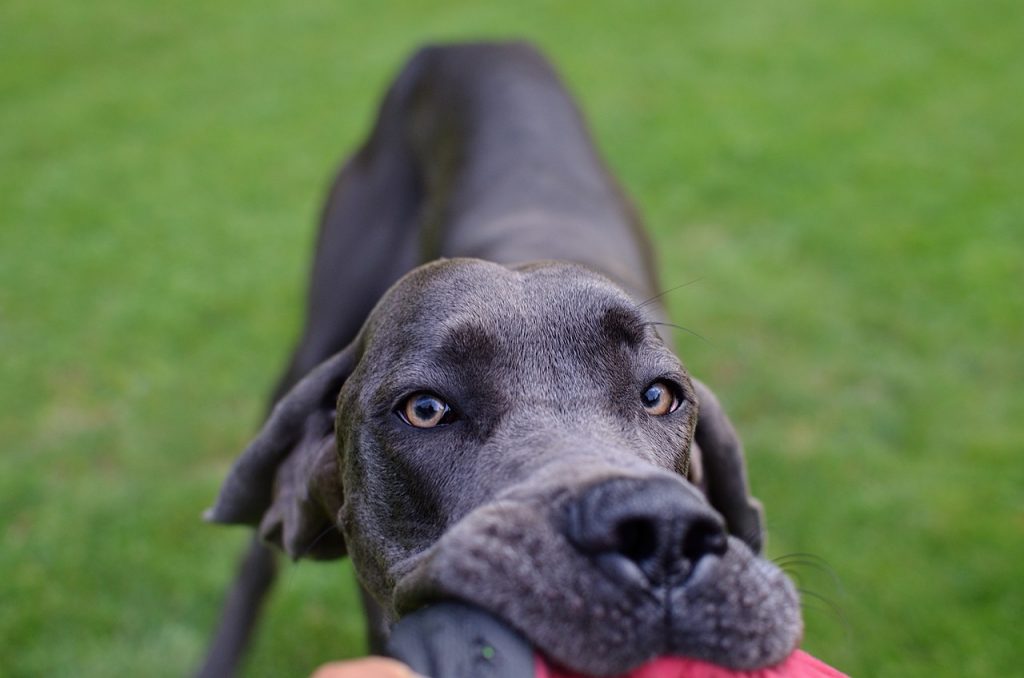As a dog owner, it can seem daunting to research and understand the plethora of conditions that your dog can develop throughout his lifetime. However, knowing the warning signs for life-threatening conditions and being able to react accordingly as they develop can be the difference between life and death for your dog.
Gastric Dilatation Volvulus is a life-threatening gastrointestinal condition in dogs that rapidly progresses. Learn more about the what GDV is, common symptoms of gastric dilatation volvulus in dogs, as well as potential causes and treatment methods.
What is Gastric Dilatation Volvulus?

Gastric Dilatation Volvulus is a condition that is associated with meals that are large and result in the dilation of the stomach due to both the food and gas. In cases of Gastric Dilatation Volvulus, the stomach dilates to a point where neither the food nor the gas is capable of being expelled.
The stomach dilates and expands, and as it continues to do so, the pressure quickly builds. The increased pressure within the stomach and its increase in size results in a number of potential consequences that can be life-threatening. The increased pressure and size of the stomach can result in a rupture of the stomach wall, a loss of blood flow to the lining of the stomach, the cessation of proper blood flow to the heart from the abdomen, or increased pressure on the diaphragm which causes the lungs to be unable to inhale and exhale normally.
When Gastric Dilatation Volvulus develops, the body cannot circulate oxygen as it is supposed to and the subsequent poor ventilation causes tissue cells to begin to die. As the stomach becomes increasingly dilated, it can dilate enough to actually begin rotating within the abdominal cavity, which is referred to as Volvulus.
This rotation within the abdominal cavity can cause blood flow to become blocked to the stomach and the spleen. Many dogs go into shock due to the rapid progression of Gastric Dilatation Volvulus within their body. Risk factors for developing Gastric Dilatation Volvulus include genetic factors, age, being fed one large meal per day, and having an increased thoracic height to width ratio.
Studies are being conducted to determine more concretely what causes this condition as there is still a significant amount of mystery surrounding how and why this condition occurs suddenly within some dogs.
Symptoms of Gastric Dilatation Volvulus in Dogs
Identifying the symptoms of Gastric Dilatation Volvulus is imperative to your dog receiving treatment quickly. Below are a handful of the most common symptoms associated with GDV in dogs.
- Distended abdomen
- Anxious looks or staring at the abdomen
- Standing, stretching, and pacing
- Attempting to vomit without producing anything
- Drooling
- Increased panting
- Difficulty breathing
- Weakness
- Collapsing
- Elevated respiratory rate
- Inconsistent pulse
Diagnosing GDV in Dogs

If you believe your dog has developed Gastric Dilatation Volvulus, it is vital that a licensed veterinarian examine your dog immediately. In order to diagnose GDV, many veterinarians will conduct a physical examination and request initial bloodwork that typically includes a urinalysis, blood electrolytes, serum chemistry, and a complete blood count.
These tests allow the veterinarian to determine if there are metabolic abnormalities occurring. In addition to bloodwork, veterinarians will often take an x-ray of the abdomen. If your dog is displaying respiratory issues as well, then a blood gas analysis may be performed to determine how severely the respiratory system has been compromised.
If your dog has developed an abnormal heart rhythm, an electrocardiogram may be performed to determine the presence of a cardiac arrhythmia.
Treatment Options for Gastric Dilatation Volvulus
Once a dog has been diagnosed with Gastric Dilatation Volvulus, the veterinarian will begin to work to stabilize his condition and prevent further deterioration. First, many veterinarians will often begin intravenous fluids and oxygen therapy. To release the excess air and fluid accumulated in the stomach, a tube will be passed down the esophagus into the stomach.
This may be followed by water being flushed into and out of the stomach to remove any food particles that are still in the stomach. In some cases, the veterinarian may inject a needle into the stomach from outside the body to quickly release the air. When the anesthesia will be given to your dog is dependent upon the judgment of the veterinarian based on the condition of the dog and its stability.
For many dogs, surgery is required in order to analyze the condition of the stomach wall and surrounding organs. If the stomach has rotated, it will be returned to its normal position and is often permanently attached to the abdominal wall (gastropexy). This prevents the stomach from rotating again in the future if Gastric Dilatation occurs. Depending upon the severity of the Gastric Dilatation Volvulus, part of the stomach wall (partial gastrectomy) or the spleen (splenectomy) may need to be removed.




